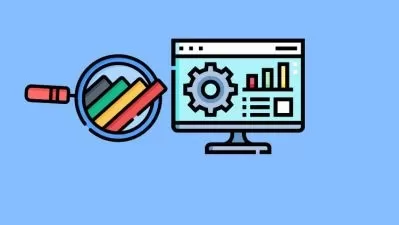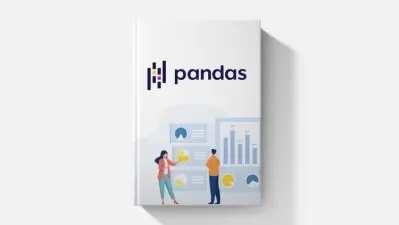Data Analysis with Polars
Liam Brannigan
50:27
Description
Transform your data analysis with Polars - the powerful new dataframe library
What You'll Learn?
- Taking advantage of parallel and optimised analysis with Polars
- Working with larger-than-memory data
- Using Polars expressions for analysis that is easy to read and write
- Loading data from a wide variety of data sources
- Combining data from different datasets using fast joins operations
- Grouping and parallel aggregations
- Deriving insight from time series
- Preparing data for machine learning pipelines
- Visualising data with Matplotlib and Plotly
Who is this for?
What You Need to Know?
More details
DescriptionIn this course I show you how to take advantage of Polars - the fast-growing open source dataframe library that is becoming the go-to dataframe library for data scientists in python. I am a Polars contributor with a focus on making Polars accessible to new users. IÂ have spent months getting familiar with all the details of the Polars codebase.
"Thank you for your great work with this course - I've optimized some code thanks to it already!" Maiia Bocharova
The course is for data scientists who have some familiarity with a dataframe library like Pandas but who want to move to Polars because it is easier to write and faster to run. The core materials are Jupyter notebooks that examine each topic in depth. Each notebook comes with a set of exercises to help you develop your understanding of the core concepts.
For many key topics this course is the only source of documentation. I have focused on producing Jupyter notebooks to allow anyone taking the course to start using the full power of Polars. As a consequence the video content is limited. More videos that go beyond the notebooks will be added in the coming months once the core functionality has been documented in the notebooks.
The course introduces the syntax of Polars and shows you the many ways that Polars allows you to produce queries that are easy to read and write. However, the course also delves deeper to help you understand and exploit the algorithms that drive the outstanding performance of Polars.
By the end of the course you will have optimized ways to:
load and transform your data from CSV, Excel, Parquet, IPC or a database connection
run your analysis in parallel
work with larger-than-memory datasets
carry out aggregations on your data
combine your datasets
visualise your outputs and
prepare your data for machine learning pipelines
Who this course is for:
- Data scientists with no familiarity with Polars and want to get up and running
- Data scientists with some familiarity with Polars but want a deeper understanding
In this course I show you how to take advantage of Polars - the fast-growing open source dataframe library that is becoming the go-to dataframe library for data scientists in python. I am a Polars contributor with a focus on making Polars accessible to new users. IÂ have spent months getting familiar with all the details of the Polars codebase.
"Thank you for your great work with this course - I've optimized some code thanks to it already!" Maiia Bocharova
The course is for data scientists who have some familiarity with a dataframe library like Pandas but who want to move to Polars because it is easier to write and faster to run. The core materials are Jupyter notebooks that examine each topic in depth. Each notebook comes with a set of exercises to help you develop your understanding of the core concepts.
For many key topics this course is the only source of documentation. I have focused on producing Jupyter notebooks to allow anyone taking the course to start using the full power of Polars. As a consequence the video content is limited. More videos that go beyond the notebooks will be added in the coming months once the core functionality has been documented in the notebooks.
The course introduces the syntax of Polars and shows you the many ways that Polars allows you to produce queries that are easy to read and write. However, the course also delves deeper to help you understand and exploit the algorithms that drive the outstanding performance of Polars.
By the end of the course you will have optimized ways to:
load and transform your data from CSV, Excel, Parquet, IPC or a database connection
run your analysis in parallel
work with larger-than-memory datasets
carry out aggregations on your data
combine your datasets
visualise your outputs and
prepare your data for machine learning pipelines
Who this course is for:
- Data scientists with no familiarity with Polars and want to get up and running
- Data scientists with some familiarity with Polars but want a deeper understanding
User Reviews
Rating
Liam Brannigan
Instructor's Courses
Udemy
View courses Udemy- language english
- Training sessions 12
- duration 50:27
- Release Date 2022/11/26











